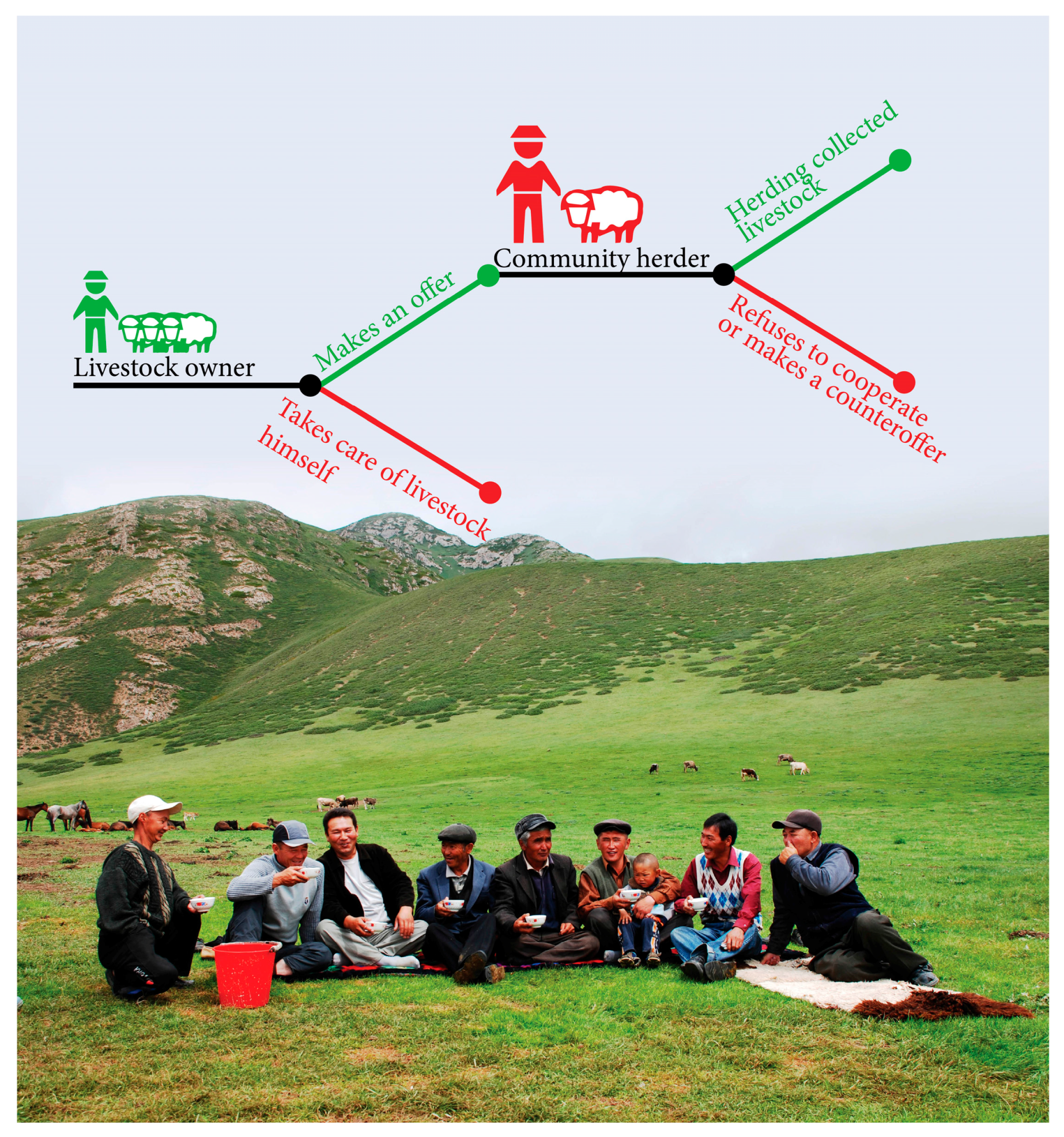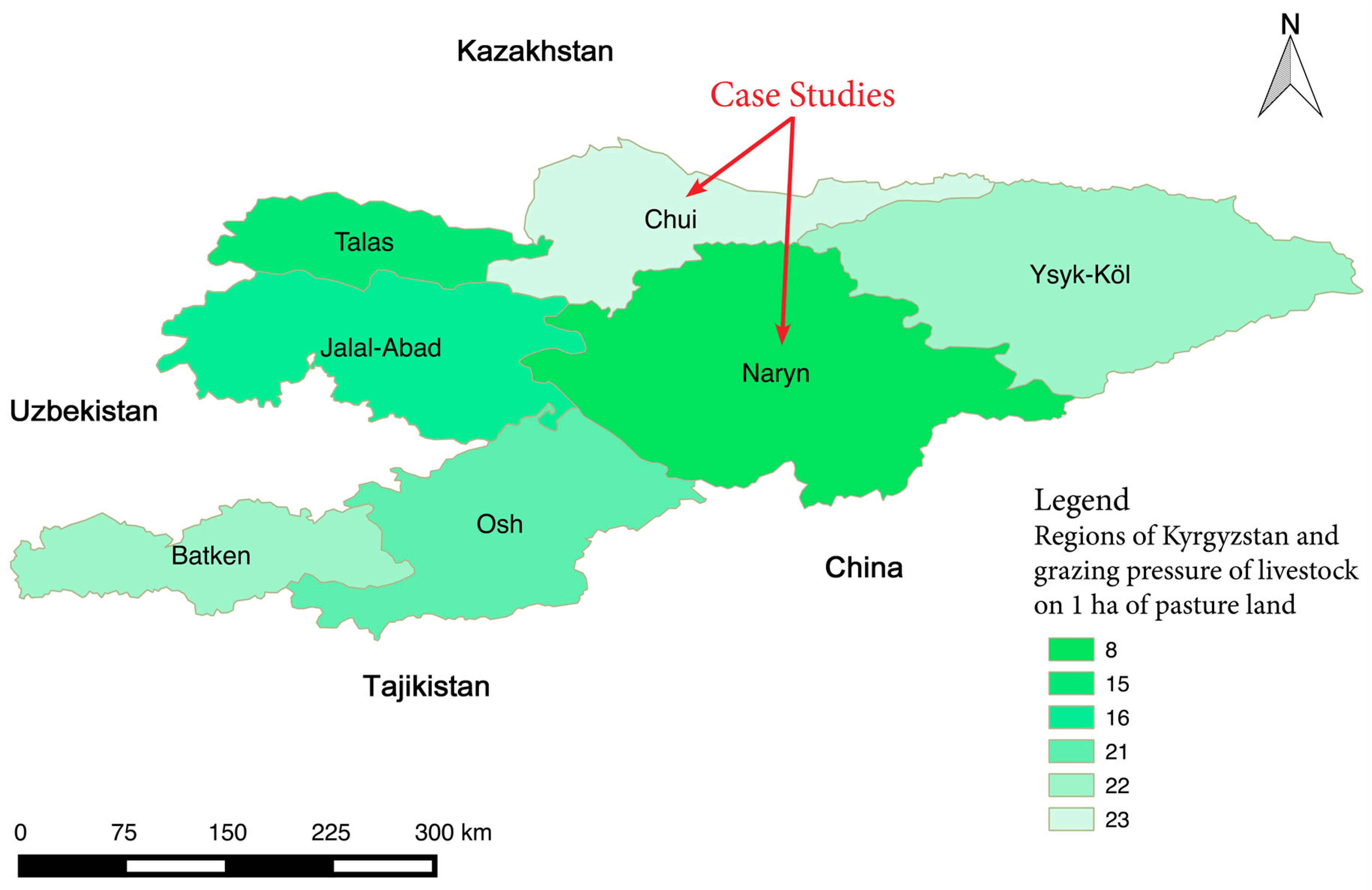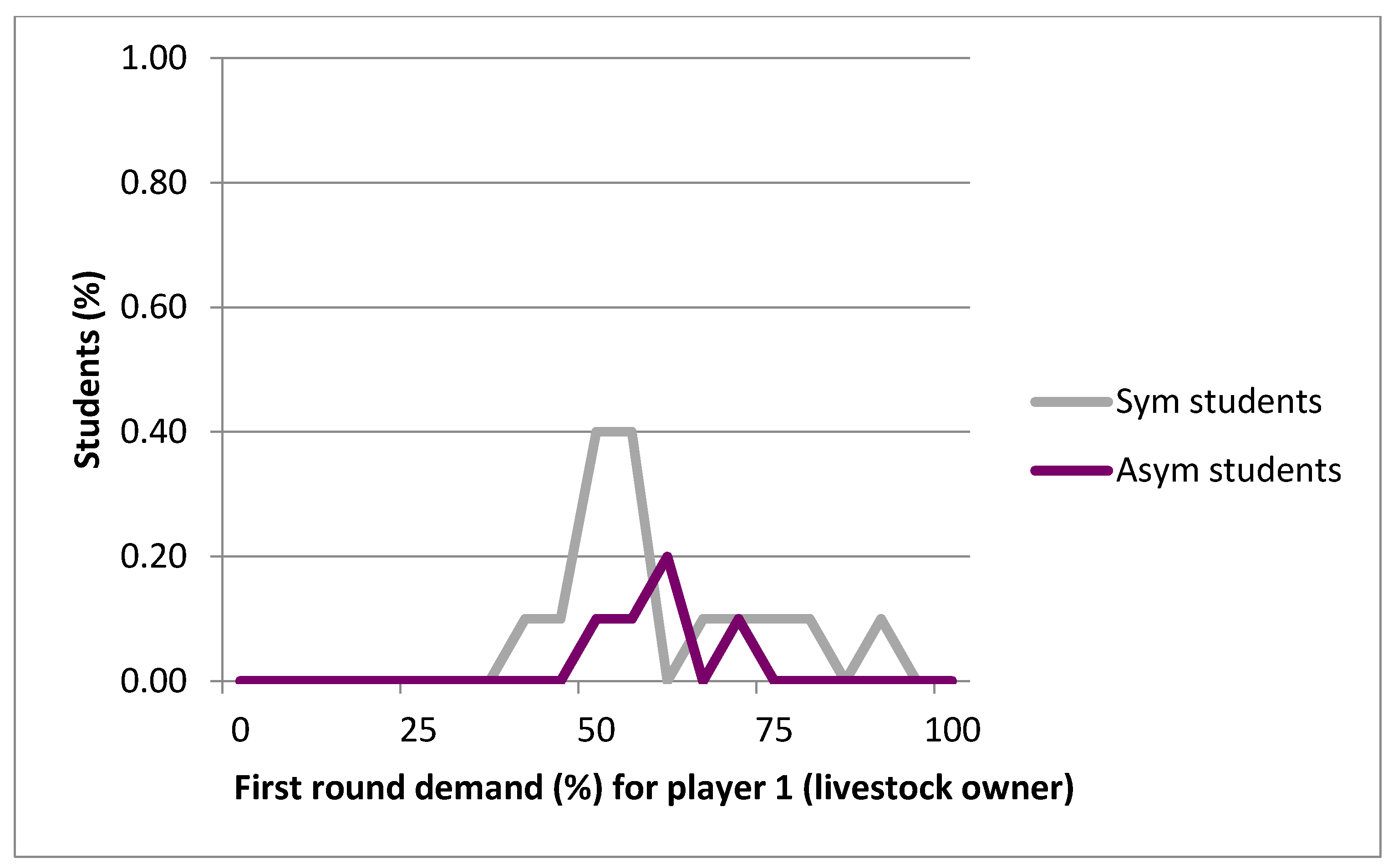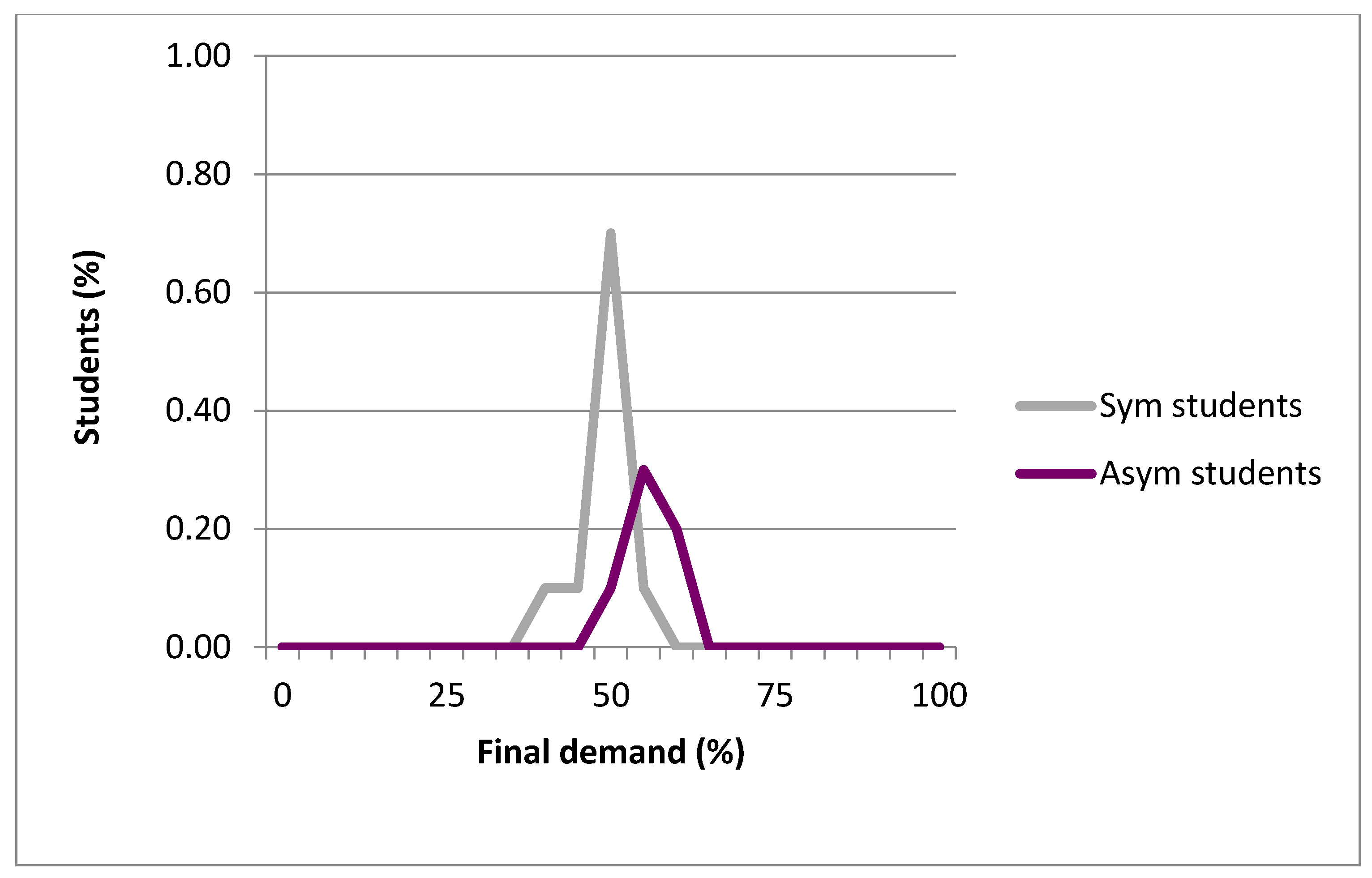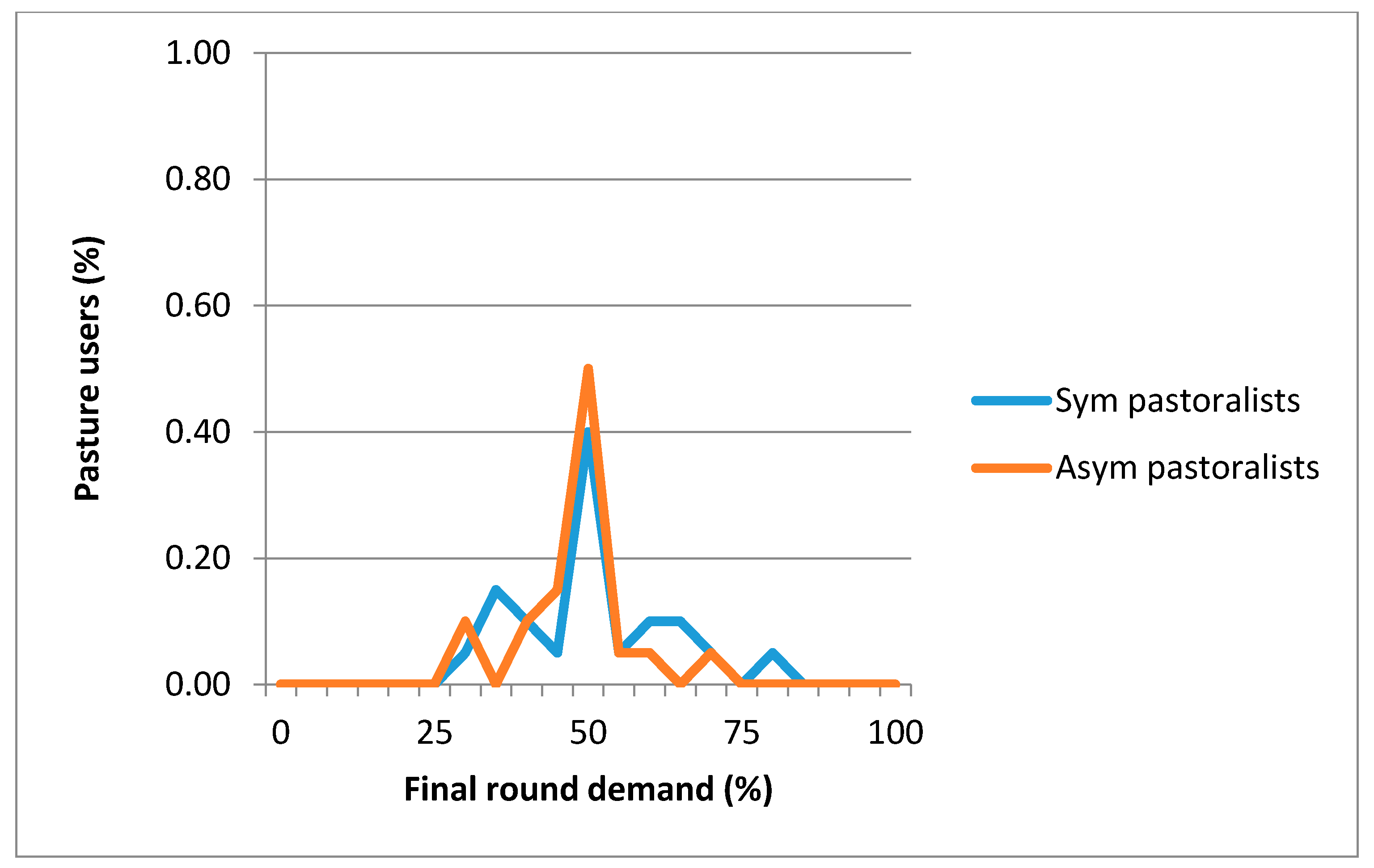3.1. Power or Efficiency?
Knight [
23,
24] suggests that economic contract and distributive bargaining approaches to interpreting institutional change, model basic social interactions differently. Thereby Knight offers alternative explanations of change by referring to different sets of conditions. The mainstream economic approaches are based on examining interaction situations where cooperation payoffs are higher than breakdown values, where breakdown values are equal. The bargaining approach on the other hand, emphasizes the differences in both player payoff structures and breakdown values. Knight argues that, unlike the efficiency concept, the distributive theory of institutional change seeks to explain rational self-interested behavior in a broader range of conditions in which social interaction takes place.
Williamson [
25] insists however, that efficiency is also an important explanatory variable under conditions of asymmetric interaction: “power has little to contribute to the study of contract and organization in circumstances where parties to an exchange can and do contract in a relatively farsighted way” [
25] (p. 23). He argues that asymmetric interaction may have an efficient constructional arrangement, and underlines an important condition: the actors involved in such interaction tend to look toward the future, recognizing potential hazards and transaction costs prior to their agreement. Thus, in order to protect their interests, the actors choose what appear to be the most efficient agreements, which include safeguards.
In order to explore the relationship between sets of conditions (related to power asymmetry) and the outcomes of interactions (explicitly referring to efficiency) we have conducted a study of bargaining interactions based on Rubinstein’s bargaining game [
5]. In what follows, we present the bargaining game model and we position it in relation to the experimental literature regarding the interplay between power and efficiency.
3.2. Rubinstein’s Bargaining Game and Experimental Evidence
Rubinstein [
5] (p. 97) defines the bargaining problem by setting the following situation and question: “Two individuals have before them several possible contractual agreements. Both have interests in reaching agreement, but their interests are not entirely identical. What will be the agreed contract, assuming that both parties behave rationally?” He proposes a formal solution to the bargaining problem: The higher a player’s bargaining power, the larger the share he or she will obtain in the outcome. Under the necessary condition of complete information, Rubinstein predicts that an agreement can be reached in the most efficient way if:
The first offer is accepted and
There are no inefficiency-inducing delays, no matter how much power players have.
In line with this bargaining-game theory prediction, experimental evidence has indicated a high percentage of efficient agreements in bargaining experiments. However, the literature reports that a non-negligible amount of offers have not been accepted immediately, leading to decreases in bargaining efficiency [
26,
27,
28].
The implications of power asymmetry for equity and efficiency are further explored in the public good and common pool games in Kyrgyzstan [
29] and elsewhere [
30,
31] it has been found that player payoffs significantly decrease when one of the players has asymmetric power and “there is a fundamental balance between inequality and efficiency” [
31] (p. 1596). Experimental literature offers some possible explanations for this observation:
Subjects learn about the game and the behavior of other players, adjusting their behavior accordingly. Bargainers are not only concerned about their own payoffs but for the earning of their fellow co-players. Consequently there is a prevalence of equal divisions in experiments [
27] (p. 327).
The differences of players between the expectations about the terms of a potential agreement and a failure to reach one influence their behavior [
26].
Power asymmetry does not exclude cooperation, however it might hinder it. This occurrence is related to the degree of “inequality” disadvantaged players are willing to tolerate [
31].
In order to explore how power asymmetry can affect the efficiency of bargaining outcomes, we conducted framed laboratory and field experiments dealing with the use of pasture in Kyrgyzstan. The selection of the particular case allowed us to explore the relationship between power asymmetry and efficiency in a setting where users regularly face bargaining dilemmas related to the use of this vital resource. The laboratory experiments were carried out in Naryn State University in Naryn and the initial intention of the authors was to test the game, recruit and train field assistants and to use students as control group. However, as it will be later discussed the experimental findings from the students offered further insights. The field experiments were conducted in Jergetal and Tosh Bulak communities (Jergetal Ayil Okrugu, Naryn rayon, Naryn Oblast) and Tosh Bulak (Tosh Bulak Ayil Okrugu, Sokuluk rayon, Chui oblast) (see
Figure 2), representative cases of the different environmental and socio-economic characteristics of two typical regions of Kyrgyzstan. While Jergetal is located in a remote mountain region with harsh climate conditions, with a traditional specialization in livestock and limited economic alternatives, Tosh Bulak has characteristics of a peri-urban area with a mild climate, good access to market and developed infrastructure. Compared with Tosh Bulak, Jergetal has a larger total area of pastures for climatic and topographic reasons. Due to the scarcity of pasture areas, the pressures on the resources are much higher in the Tosh Bulak. Despite their different characteristics, the selected communities face similar problems of pasture use, for instance, livestock has increased significantly in recent years in both communities affecting pasture conditions.
We further complemented our findings and triangulated our results with other qualitative methods, such as a post-experimental survey, group discussions and semi-structured interviews with experiment participants. In the following we describe the design of the game and the applied complementary methods.
3.3. Experimental Design
Rubinstein’s bargaining game [
5] was chosen as the basis for our experiment. According to bargaining game theory, the credibility of commitment is key to relative bargaining power, as the logic of institutionalization is to constrain the choices of others through one’s own credible commitments. Awareness of differences of social actors in their payoffs for non-coordination (breakdown values) can influence the credibility of strategies. The mechanism of bargaining is illustrated with the following example: Let us assume that player A communicates to player B that he will choose strategy (R), which provides greater benefit to him, regardless of the choice of player B; we can expect that, if he finds the commitment of player A to be credible, player B will select strategy (L), even if it is less beneficial for him. The credibility of commitment depends on the difference of the breakdown values of players, and the availability of exit costs, exit opportunities of non-coordination and time preferences (favoring early rather than delayed coordination) which can all affect actor’s choices. Player B accepts the credibility of commitment of player A, if she knows that player A is likely to suffer less in a case of non-cooperation. In Rubinstein’s bargaining game bargaining power is the ability of a player to survive without an agreement; thus, bargaining power time preference (or patience of the players involved) is modeled using discount factors. For example, there are two players bargaining over the partition of a pie of size L. Each makes a proposal regarding how the pie should be divided between them. Each player has a discount factor
or
. The discount factor (
) has to be less than 1 and at least one of them has to be positive (0 <
> 1). If
= 0, that means that pie has no worth for Player 2 after the first round, and Player 1 can exploit this to get all the pie. If
= 0, Player 1 gains 1 −
, which is the proportion of the pie that Player 2 loses, if he refuses an offer from Player 1 in the first round.
In cases where offers are rejected, the pie decreases for each player differently, according to her or his discount factor. The stronger a player is, the higher their share will be. Bargaining game theory predicts that
In the first round, player 1 offers (1 − )/(1 − ) for himself and 1 − (1 − )/(1 − ) for player 2.
Player 2 will immediately accept this offer.
For each run of the experiment, each of the players was randomly selected to be either the young community herder or livestock owner. In this game, the livestock owner and young community herder are to share 100 KGS (Exchange rates are based on
http://www.nbkr.kg, on 1 August 2013, the exchange rate was 48.90 KGS to the USD; on 1 May 2014, it was 53.90 KGS to the USD). In first round, the livestock owner starts and writes on a piece of paper an offer to share this amount in (%) to the herder. The young community herder may accept or reject the offer. If the herder accepts, the game is over and the agreed amount is shared between the players. But, if the herder rejects the offer, then the next round begins. The new amount to share however is decreased and now differentiates for each player (see
Table 1). The higher a player’s discount factor is, the higher her bargaining power. The participant who plays first (in this game the livestock owner) has an additional positional advantage as well.
In the symmetric treatment, the amount to share decreases by 40% for the livestock owner (first mover) and by 30% for the young community herder (second mover). The discount factor is higher for the livestock owner. This difference illustrates the fact that the first mover has more bargaining power than the second mover. Meanwhile, in the asymmetric treatment, the amount to share decreases by 5% for the livestock owner and by 30% for the community herder (
Table 1). The chosen discount factors were selected following Vollstädt [
28] in order to keep calculations simple while differentiating enough between players and treatment types. We tried to adjust the discount factors of livestock owners and herders in order to reflect their power relation in practice. This adjustment was informed by qualitative research preceding the experiment, which was more of an informed assumption or a vague estimation rather than an actual measurement.
The laboratory experiment was conducted at the Naryn State University in Naryn, Kyrgyzstan in May 2013. Twenty undergraduate students from the economics and environmental departments were invited to participate in the game. Subsequently, the field experiments were conducted with forty pasture users in the Jergetal and Tosh Bulak communities in June–July 2013 and in May 2014 respectively. Undergraduate students (50% female) from the economics and environmental departments were invited to participate in the game, of which 20 students with an average age of 21 participated in both symmetric and asymmetric treatments. About 30% of participants were from households living in a rural area. The field experiments were conducted in the Jergetal and Tosh Bulak communities with 40 pastoralists with an average age of 37 taking part in both symmetric and asymmetric treatments. About 40% of the participants were female and 82% had at least a secondary education. Half of the participants were medium livestock owners and 30% were community herders. In both experiments, the majority of participants reported that they understood the game (93% in field and 70% in the laboratory) and were satisfied with the money they earned (87% in field and 95% in the laboratory).
3.3.1. Experimental Procedure
The authors, together with local research assistants visited the university and rural communities before the actual experiment in order to discuss the selection criteria for the players, a realistic number of participants, acquires some background data, find a venue and deal with organizational issues. We opted not to invite subjects with previous experience on economic experiments, ruling out possible learning effects and biases from other ongoing or past similar activities [
29]. Participants for the experiment were finally recruited via local partners: members of the Pasture Committees within the selected communities and staff from the Department of Ecology at Naryn State University.
Before the game, the participants signed consent letters and randomly selected their ID numbers. In the following, they assumed the role of either livestock owner or young herder and 30 bargaining pairs were formed in total (10 pairs of students and 20 of pasture users). Instructions in the local language were distributed and players had time to read them and to ask questions. During the introductory sessions (asymmetric and symmetric) the participants were informed about the discount rates of the bargaining pair. Please note that prior to and during the experiment we did not explain power and why bargaining pairs have different discount rates. During the focus group discussion after the experiment though, we discussed extensively what discount rates means for the power of pasture users and how the bargaining outcome of the game relates to real-life situations. During the experiment, players were not allowed to communicate; bargaining pairs were placed in separate rooms or places so as to ensure sufficient privacy. The players’ decisions were written on a previously prepared paper distributed to the players just before the beginning of the game. After the experiment, each participant filled out a questionnaire. At the end of all games, a focus group discussion followed and in depth interviews with all players were conducted. As a very last step, participants were paid according to their earnings from the game in cash and in private, receiving also a show-up fee. On average, each player earned the equivalent of one day’s wages for their local area for his or her participation in a 2.5 to 3 h session. The moderators did not limit the time for the bargaining in each round, but the experiments lasted a minimum of 1 and a maximum of 4 rounds. Each of the 60 individuals that took part in the experiment received an average of 285 KGS (6 USD), including their earnings and the show-up fee.
3.3.2. Complementary Methods
Before and after the field experiments, in total 40 qualitative semi-structured interviews were conducted with pasture users in the studied communities within a framework of qualitative case study. Two communities, were chosen for the case study, identified as administrative units (Aiyl Okrugu). The units of analysis were core bargaining situations in which actors make decisions that tend to have strong impacts on shaping the outcome of social dilemmas in pasture use and management. The case study was undertaken as a means to investigate formal as well as informal mostly undocumented institutions for regulating pasture use. The acquired knowledge was deemed necessary in order to analyze the causes and reasons for actors’ decisions as well as to better understand and explain ongoing change of pastoral institutions.
Inputs from these in-depth interviews provided important information for framing the experiment and also for equipping the researchers with qualitative information that would prepare them for the games and enable them to understand possible reasons and motivations for decisions made by the pasture users. The post-experimental survey acquired some additional information on players’ demographics, current pasture practices and reasoning behind personal decisions made in the different treatments of the bargaining game. The focus group discussions reflected upon the game bargaining situations and real-life interactions seeking to explore similarities and differences between the bargaining process and outcomes.
There are many methodological challenges in the operationalization of theories of institutional change. A difficult one to operationalize is the concept of power. Power is dynamic and changes over time; it might be offset by another resource; and it is very difficult to measure [
33]. In order to address these challenges, the bargaining power here was conceptualized as an ability to survive longer without a cooperative agreement, in other words an ability to exhibit considerable patience in bargaining. Three analytical steps were taken to triangulate the methods (case study and bargaining experiments) and analysis of the collected qualitative and quantitative data (
Table 2).
Scientific investigation always starts with a qualitative step. Before scientists can study quantitatively, they must first figure out what exactly they want to study and then need to define the scale and/or levels of measurement of the phenomena in question [
34]. Thus, here core action situations in pasture use and key power resources involved in bargaining and their dynamics were first identified and evaluated within the framework of the qualitative case study.
A quantitative analysis then follows in order to learn more about the selected empirical phenomena. Knowledge gained about core bargaining situations and the main power of actors in step one was later used to frame the experimental game. In line with the Rubinstein’s bargaining game, power was measured in terms of the time preference of players, and quantitative data collected from the bargaining experiments was statistically analyzed to learn about the causal relationships between power asymmetry and the efficiency of bargaining outcomes.
The results of a quantitative analysis then were interpreted, again qualitatively. For the present study, the experimental results were interrelated by referring to the findings from the case studies in order to understand the reasons behind the decision-making processes of pasture users and their implications for bargaining outcomes in pasture use.
